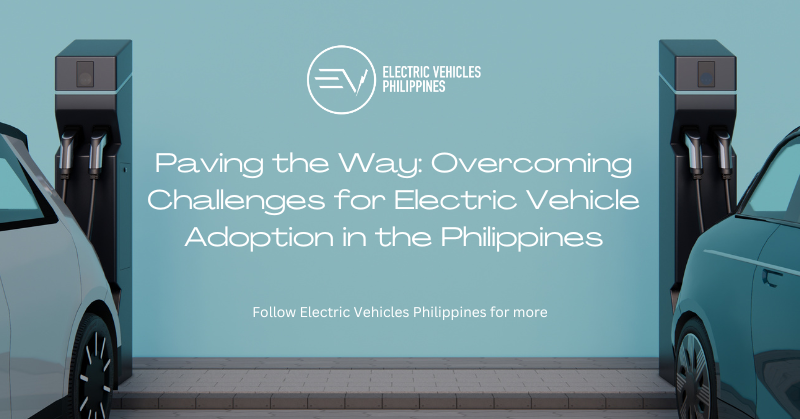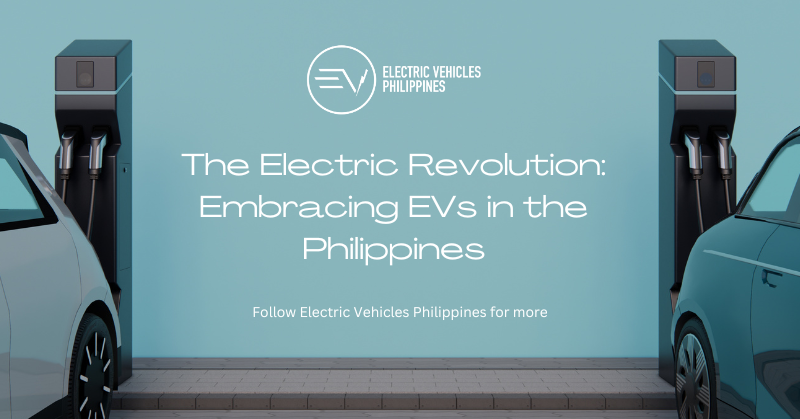Paving the Way: Overcoming Challenges for Electric Vehicle Adoption in the Philippines
Paving the Way: Overcoming Challenges for Electric Vehicle Adoption in the Philippines

The future and hope of the planet is electric. Now, more than ever, with people across the world feeling the negative effects of climate change, there is a very real need to prioritize the minimization of harmful carbon dioxide emissions—much of which come from our gas-powered vehicles. A UN climate science study has found that carbon dioxide emissions have to fall by around 45% by 2030 if we want to limit global warming to 1.5°C and stop any other harmful effects like flooding, extreme heat, and other adverse weather phenomenon.
The challenge of EV adoption the Philippines
If there’s anything that the past years have taught us, it’s that the summer days are getting hotter every year. The average temperature for the summer of 2024 has been around 36°C. As uncomfortable as that has been for those living in the major cities, there have been instances of temperature rising to as high as 55°C in other parts of the country. It’s clear that there is a need to shift towards low-carbon options like electric vehicles (EVs) if we want to make a difference.
A 2023 survey conducted by Standard Insights has found that there is a positive attitude towards adopting EVs as a primary means of transportation in the country. This is especially true with younger generations who better understand the current climate situation and the importance of cleaner, greener mobility solutions. There are three major challenges that need to be overcome, however, before this attitude and interest translates into action.
EVs cost more
Electric vehicles cost more than their “gas-guzzling” counterparts. That’s perhaps the biggest barrier for many people—especially in marginalized sectors that rely on their gas-powered vehicles for their livelihood. While many might strongly agree to the long-term benefits of reduced emissions, the fact is that many cannot afford to invest in EVs. It doesn’t help that financing options when it comes to electric vehicles aren’t as diverse and as comprehensive as that of standard vehicles.
The infrastructure isn’t there yet
In every town and city and in the roads in between them there’s a gas station within easy reach. Often, you’ll have many from different brands. The same cannot be said of EV charging stations at the moment. Sure, many have sprung up in the bigger cities. Sure, many EVs are capable of operating at ranges that wouldn’t necessitate “topping up” between destinations. But the fact remains that should they be needed, they aren’t there quite yet.
People don’t understand EVs
EVs don’t have the same range as regular vehicles. EVs can discharge completely and leave you stuck in traffic. EVs are slower. EVs will run up your electric bill when you charge them at your home. All of these commonly held ideas about EVs are completely wrong. Nonetheless, the misconceptions and misunderstandings about electric vehicles are many and prevalent. These can turn people away from investing in EVs long before they step into a showroom to experience them for themselves.
Key needs for EV adoption
First and foremost, there must be buy-in from the highest levels of government for EVs to become more mainstream. Incentives and subsidies would go far to make EVs more accessible to a broader spectrum of the population. Republic Act No. 11697 (or the Electric Vehicle Industry Development Act) has certainly been a step in the right direction as it provides exemptions from the number coding scheme for owners of hybrid and electric vehicles. If the recent debates and confrontations about the proposed jeepney phaseouts are any indication, however, more needs to be done.
Of course, it isn’t just the government that needs to play its part as business and corporation are also critical in helping to drive down costs through economies of scale and technological innovations. After all, these companies are the ones who can more quickly and efficiently address infrastructure needs in cooperation with the government. This cooperation between key decision makers and movers can expanding the charging network, ensuring seamless integration with existing transportation infrastructure, and fostering public confidence in the reliability of EVs as a viable mode of urban mobility.
The future is still bright
The increase in interest in EVs as a viable replacement for regular vehicles is always going to be a great thing. It shows that the public wants to lean towards greener solutions to challenges in mobility for the long term and can only serve to push government and corporate entities to invest in legislature and infrastructure that will drive wider adoption. The key for consumers is to go out and explore what EVs have to offer. Trying it out for yourself—complemented by research through available, reliable channels—will dispel doubts and show what the future has to offer.
EVPH is your one reliable source of key, up-to-date, and verified information. We have resources (link to blog articles) for you to go through to dispel your doubts, misunderstandings, and fears about EVs. We also offer a more affordable alternative to existing car loans (link to subscription information page) that will allow you to enjoy the benefits of an electric future today. Have questions? Reach out to us! Our team will be more than happy to help you.

